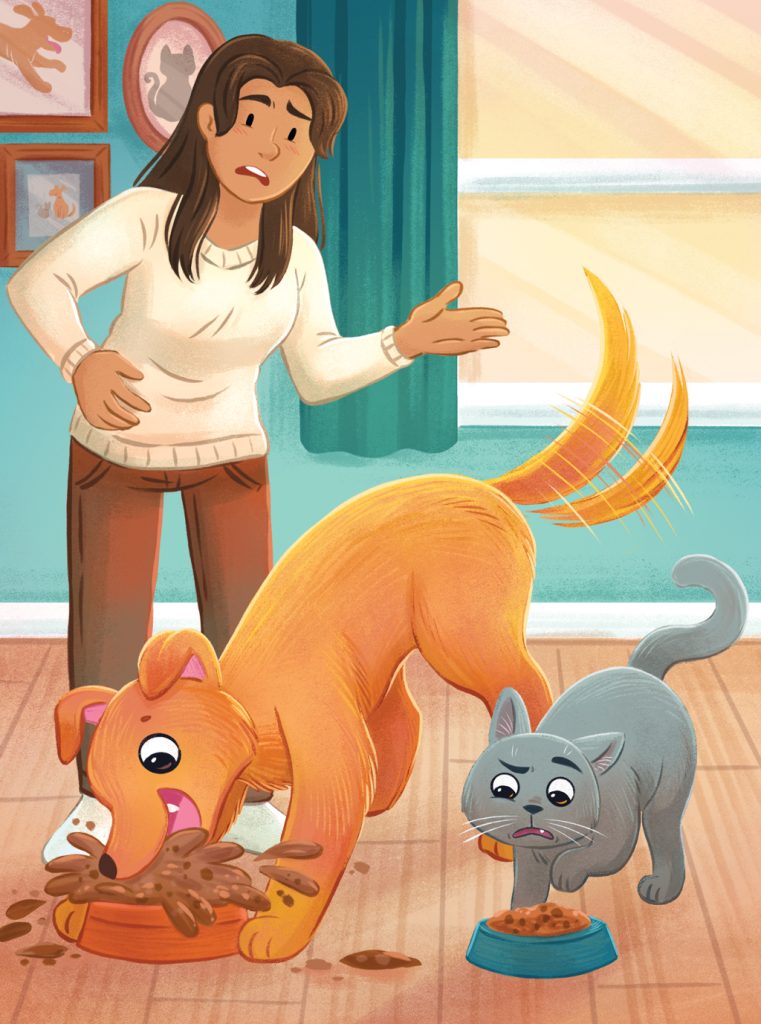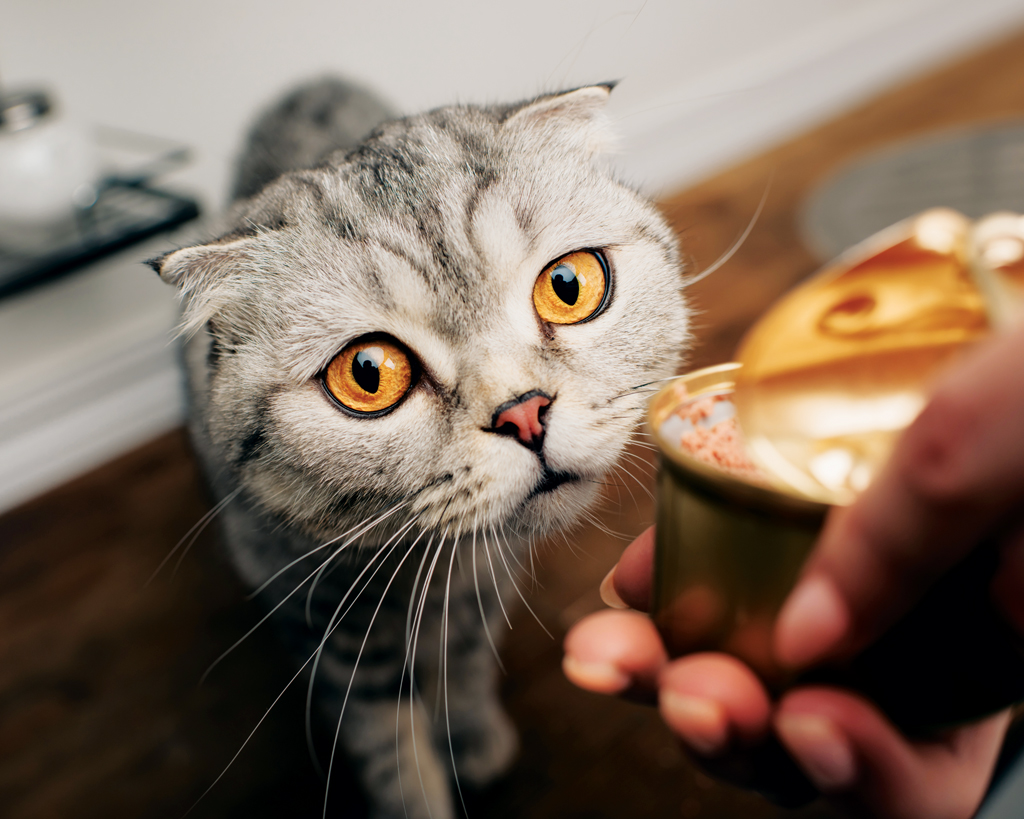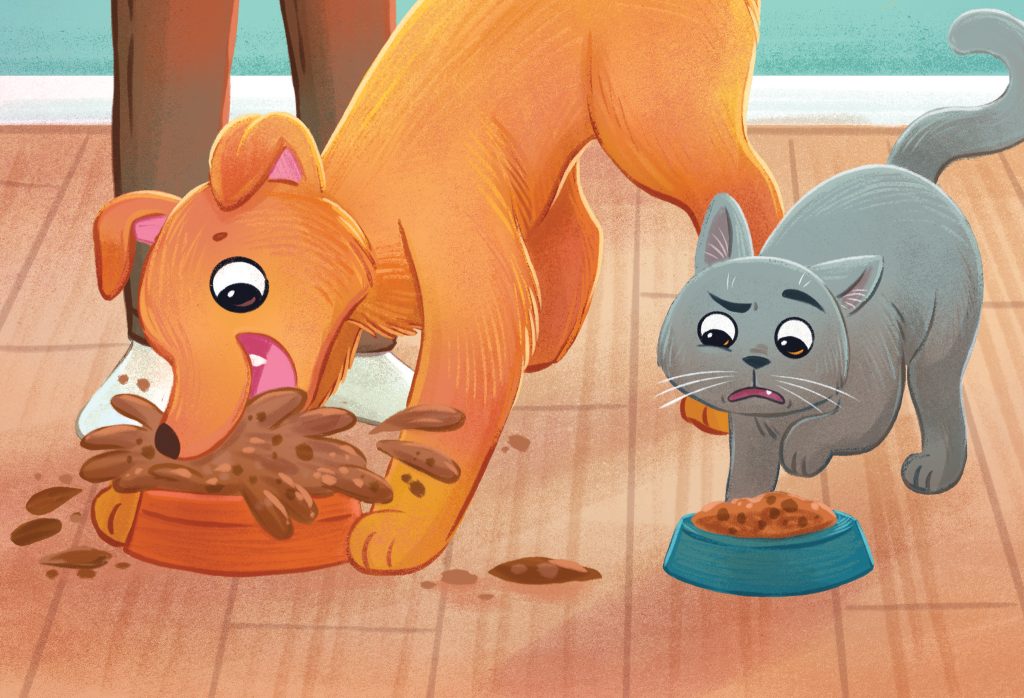Any pet proprietor who has ever watched their cat refuse to eat the priciest store-bought meals—whereas their canine fortuitously devours rocks, sneakers, dirty socks, and nuggets unearthed from the litter discipline—has contemplated the polar-opposite tastes of their feline and canine companions. What causes these variations in our furry buddies?
Omnivores and Carnivores
From the smallest housecat to crucial tiger, all cats are obligate carnivores: they require meat for his or her survival and might’t accurately digest vegetation. Meat makes up larger than 70 % of a cat’s meals plan, which signifies that cats moreover belong to a small group of creatures known as hypercarnivores. (Completely different members of this distinctive group embody owls, snakes, spiders, and most sharks.)
UK veterinary surgeon Daisy Might elements out that cats, as obligate carnivores, have very specific dietary desires. “They’re finely tuned to hunt out high-protein, meat-based meals. Their fussiness usually stems from this natural predisposition. A cat may flip its nostril up at certain meals on account of it merely doesn’t meet their dietary requirements,” she says. “So, in a method, their pickiness is a survival instinct, guaranteeing they get the nutritional vitamins they need to thrive.”
Dwelling canines, in distinction, are omnivores. Like individuals, canines can keep healthful consuming all of the issues from meat and vegetation to (some) fungi and algae. “Cats superior to be further fastidious, specialised hunters, whereas canines superior more as opportunistic scavengers, giving them each completely completely different survival strategies spherical meals,” explains Emma Fulton, a veterinarian inside the UK. “Canine are a lot much less discerning and further eager to eat irrespective of meals sources will be discovered to them. Their survival instincts drive them to learn from any potential meal, even when it’s rotten or unappealing to human sensibilities.” This drive to survive, she notes, can usually “override their good judgement and make them eat points which is able to set off gastrointestinal upset and even toxicity.”
“This all goes a good way in the direction of explaining why an animal carcass washed up on a seashore is unappetizing to a cat nevertheless may be pure ambrosia to a canine.”
For cats, freshly killed small prey harking back to rodents and birds are the ultimate phrase in engaging fare. “This reliance on modern meat most likely made them further cautious of spoiled meals,” Fulton says. “A key distinction from cats is that canines have superior further sturdy digestive applications to take care of consuming spoiled or rotten meals. Their stomachs are pretty acidic, with a pH close to 1, which helps destroy pathogenic microbes. Their fast digestive tracts moreover switch meals by further shortly. So, whereas consuming questionable meals continues to be harmful, canines are larger outfitted to eat points that may make cats and folks unwell.” This all goes a good way in the direction of explaining why an animal carcass washed up on a seashore is unappetizing to a cat nevertheless may be pure ambrosia to a canine.


Illustration by Michelle Simpson
Model Sensations
Moreover having fun with key roles inside the differing preferences of cats and canines are the fashion sensations of bitterness, sweetness, and umami. “Cats have a so much stronger sense of favor than canines due to having further bitter fashion receptors. Meals that fashion bland and even good to canines and folks can fashion pretty bitter and unappealing to cats,” Fulton says. A analysis printed in 2015 inside the journal BMC Neuroscience in distinction the bitter receptors of house cats with these of individuals and concluded that cats are much more delicate to bitterness. Fulton notes that rotten or toxic meals can seem notably unappealing to cats, given their extremely efficient sense of favor. Canine, though, “are drawn to sturdy tastes like sweetness and umami, which signal vitality and protein. Even meals that fashion bitter to them ought to nonetheless be fascinating if hungry enough.”
And, says Texas veterinarian Michael Thompson, who’s an expert on animal vitamin, “Cats are confirmed to lack the fashion receptors for sweetness that many animals, along with canines, possess.” Scientists examined the DNA of various healthful house cats, along with some tigers and cheetahs, analyzing the Tas1r2 and Tas1r3 genes that usually work collectively to allow sweetness to be detected. The analysis’s outcomes, printed in 2005 inside the journal PLOS/Genetics, level out that the Tas1r3 gene in cats works top quality, nevertheless the Tas1r2 gene does not, inflicting cats to be unable to know sweetness. Thompson says, “This can make cats naturally picky since their flavour palette is restricted.”
Cats don’t like bitterness and should’t fashion sweetness, nevertheless they may’t get enough umami. Usually known as savouriness, umami is the rich, meaty flavour attribute of cheese, mushrooms, wine, broth, and cooked meats. Researchers studied umami fashion notion in house cats, and their outcomes, printed in 2023 inside the journal Chem Senses, current that umami is by far the strongest fashion selection for cats.
Joshua Errett, founding father of Noochies! Cultivated Pet Meals in California, acknowledges how fussy cats are, saying, “They’ve the celebrity for being very picky animals for a motive.” He moreover is conscious of firsthand how extremely efficient their need for umami can be. Errett was at home, trying to create a canine take care of out of a dietary yeast combine, when his cats grew to turn out to be terribly inside the yeast. “They saved coming into my room,” he says. “I had it in a discipline, and they also had been trying to get inside the discipline.” After he put some yeast powder in a bowl for them, his cats eagerly licked it up.
Cats have “practically barely laboratory of their noses and mouths and tongues,” Errett says. “They’ll sense what revenue the meals has for them.” Canine rely totally on scent, nevertheless not cats: “It’s not all olfactory. Their tongues do an entire lot of the work.” They’re moreover glorious at determining “what has that specific amino acid profile they like.” The umami of Noochies dietary yeast is so successful with cats and canines alike that the company is making freeze-dried yeast treats for every.
Routines and Adventures
Cats are recognized for disliking change, whereas canines are seen as further adventurous. These tendencies can lengthen to meals preferences. Cats, says Fulton, “take good comfort in familiarity and routine. An abrupt change of their meals plan may end up in finicky consuming or refusal to eat the model new meals.”
Thompson agrees, saying, “Cats are creatures of habits, which means they might reject sudden modifications in the event that they’re used to a particular meals. Canine, nonetheless, can be conditioned to eat quite a few forms of meals ensuing from their historic roles as scavengers.” Cats rely on familiarity and consistency to actually really feel protected. “They develop every day habits spherical feeding, grooming, and playtime. Any disruption to their routine may trigger stress and anxiousness.”
Plus, Thompson says, “Cats have keen senses, notably their sense of scent and listening to. They’re usually extraordinarily delicate to new scents, sounds, and environments. Sudden modifications may introduce unfamiliar scents or noises which will make them actually really feel on edge.” As naturally risk-averse creatures, cats may even see modifications as doable threats. “Their instinct is to be cautious and avoid unfamiliar circumstances to protect themselves.”


LightField Studios/Shutterstock
Introducing New Meals
Any pet, whether or not or not a cat or a canine, might want some encouragement to try consuming one factor new. “Canine are usually further easygoing with their meals, and we commonly see them fortuitously chow down on irrespective of’s of their bowl,” says Mark Sapir, Chief Promoting Officer of Open Farm. The Toronto, ON-based agency makes ethical, sustainable meals for pets. “Cats, alternatively, are usually a bit further specific. They like sticking to what they know and are a lot much less adventurous. When it comes to moist meals, they’ve explicit texture and animal protein preferences, making it a bit tough to introduce new meals. As quickly as you uncover one factor they love, they’re usually hooked.”
Sapir shares some advice to adjust to when introducing new meals. “For canines, it’s all about making the meal explicit. In case your pup isn’t eager about their frequent meals, try topping it with one factor further, like freeze-dried treats, moist meals, or a savory broth. These additions can pique their curiosity and get these tails wagging,” he says. “Cats are barely trickier. Endurance is important proper right here. Take it sluggish and introduce new meals steadily. Uncover the texture and protein they adore and stick with it.” He lists the company’s hottest flavours: hen and beef for canines, poultry and fish for cats. “That talked about, canines are usually further open to choice and should benefit from rotating flavours.”
Daisy Might, the UK veterinary surgeon, elements out that some cats are actually pretty adventurous eaters, whereas some canines can be further hesitant. “Everybody is aware of cats go crazy for meat, nevertheless some are fully proper down to try completely different meals too, notably within the occasion that they’ve been uncovered to a diffusion from a youthful age. And get this—cats can determine up habits from each other! Within the occasion that they see one different feline or maybe a human member of the household munching on one factor, their curiosity could merely get the best of them,” she says. “With canines, a nasty experience with a certain meals is normally a turn-off if it led to an upset stomach. Some pups are naturally further cautious and need time to warmth as a lot as new treats and textures.”
As on a regular basis, the necessary factor to understanding any explicit canine or cat is remembering that each one is an individual. Might says, “The precept issue is that each animal has their very personal distinctive character and historic previous that shapes their preferences.”
This textual content initially appeared inside the award-winning Trendy Cat journal. Subscribe instantly!
